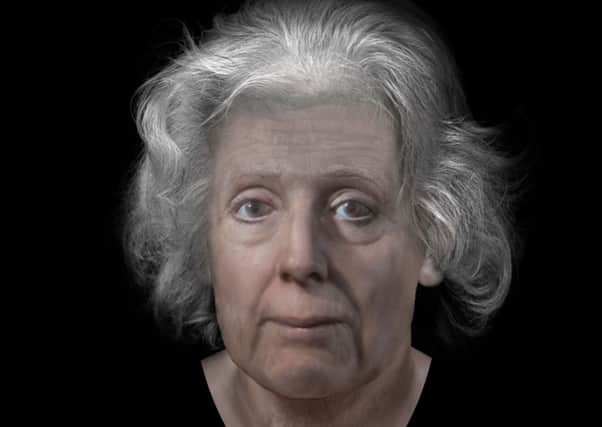Uni recreates face of one of Scotland's most notorious witches


Lilias Adie died behind bars before she could be sentenced and burned as other women accused of witchcraft were – it is thought she took her own life – ending up being buried on a beach beneath a heavy stone slab to try to prevent her coming back from the dead.
But now historians and forensic experts have joined forces to reveal the real face of Lilias Adie and the “monstrous” miscarriage of justice they believe she suffered in early 18th century Fife.
Advertisement
Hide AdThey have built a picture of a frail woman in her sixties, with failing eyesight, who nevertheless resisted her accusers’ attempts to extract names of other local women accused of witchcraft.
Adie, from Torryburn, was summoned before local church ministers and elders in 1704 over claims she had brought ill-health to one of her neighbours. According to local folklore, she is said to have confessed that she had met the Devil in a local cornfield and then “accepted him as her lover and master”.
A new investigation for BBC Scotland’s Time Travels programme has examined historic accounts of her death and archive photographs of her remains, which were recovered in the 19th century. Her grave – believed to be the only one of its type in Scotland – was dug on the mud of Torryburn’s foreshore between the low and high tide marks.
A reconstruction of Adie’s face has been revealed three years after archaeologists uncovered the slab they believed she was buried under – a known fate for people who had committed suicide, which was regarded as a crime against God at the time.
World-leading forensic experts at Dundee University were able to reconstruct Adie’s face despite the absence of her skull, which went missing from St Andrews University’s museum some time in the last century. Photographs taken of the skull were still available, and were used to create a digital reconstruction of the skull.
Historian Louise Yeoman, an expert on witchcraft in Scotland, who is featured on the BBC programme, said: “It’s sad to think her neighbours expected some terrifying monster when she was actually an innocent person who’d suffered terribly. The only thing that’s monstrous here is the miscarriage of justice.
Advertisement
Hide Ad“Lilias died a lonely, unmourned death, but she was also a courageous woman and through this recreation we’ve been able to look at her face and see her as a person, and hopefully give her a more thoughtful place in Scottish history. Pictures of ordinary Scottish women from that time who aren’t aristocrats are rare enough, but we don’t have any pictures at all of Scottish accused witches that aren’t imaginary, so this is unique and very moving.”
Dr Christopher Rynn, who led the reconstruction work, which involved state-of-the-art 3D sculpture, said: “The process is step-by-step anatomical interpretation: sculpting musculature and estimating features (eyes, nose, mouth, ears) individually from the skull, so it’s not as though you could look at a skull and instantly see the face, you have to reconstruct it to visualise it.
Advertisement
Hide Ad“When the reconstruction is up to the skin layer, it’s a bit like meeting somebody, and they begin to remind you of people you know, as you’re tweaking the facial expression and adding photographic textures.”